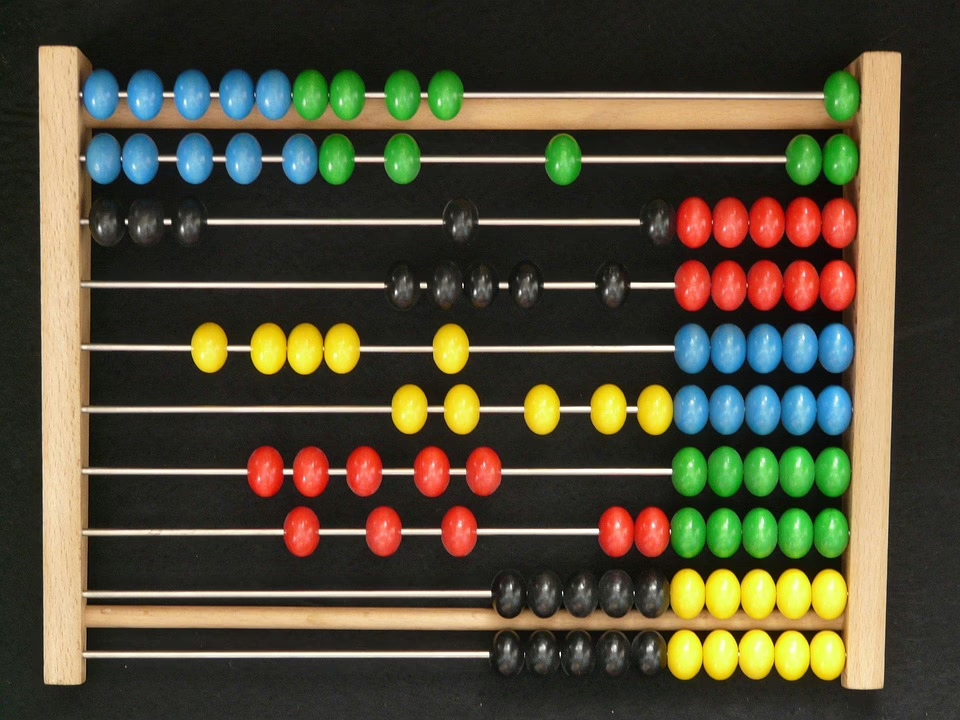A Sweep Through Time: General History and Overview
History, at its core, is the study of the past. But it is so much more than a mere accumulation of dates and events. It’s a vibrant tapestry woven with the threads of human experience, revealing the evolution of societies, the rise and fall of civilizations, the struggles for power, the triumphs of innovation, and the enduring quest for meaning. Understanding history is not just about knowing what happened, but also about understanding why it happened, and how past events continue to shape our present and influence our future. This article provides a broad overview of general history, exploring key periods, civilizations, and themes that have shaped the world we inhabit today.
I. Prehistory: The Dawn of Humanity
Before the advent of written records, a vast expanse of time existed known as prehistory. Our understanding of this era relies on archaeological evidence, genetic analysis, and the study of early human tools, settlements, and artifacts. Prehistory is typically divided into several periods, each marked by significant technological and social developments.
-
Paleolithic Era (Old Stone Age): The longest period of human history, the Paleolithic Era spans from the emergence of Homo habilis approximately 2.5 million years ago to the end of the last Ice Age around 10,000 BCE [1]. During this time, early humans lived as nomadic hunter-gatherers, relying on stone tools, fire, and communal living for survival. The development of language and rudimentary forms of art, such as cave paintings, also occurred during this period, suggesting the emergence of symbolic thought and complex communication.
-
Mesolithic Era (Middle Stone Age): A transitional period between the Paleolithic and Neolithic eras, the Mesolithic Era saw gradual shifts in human behavior and technology in response to changing environmental conditions following the end of the Ice Age. Hunting and gathering remained prevalent, but there was a greater emphasis on utilizing a wider range of food resources, including fish and small game. The development of more refined stone tools, such as microliths, also characterized this era.
-
Neolithic Era (New Stone Age): A pivotal period in human history, the Neolithic Era witnessed the development of agriculture and the domestication of animals, leading to settled lifestyles and the rise of villages [2]. This “Neolithic Revolution” transformed human societies, allowing for increased food production, population growth, and the development of specialized skills and crafts. The invention of pottery, weaving, and more sophisticated stone tools further contributed to the development of early agricultural societies.
II. The Ancient World: Civilizations Emerge
The development of writing systems marked the transition from prehistory to the historical period, allowing for the creation of records and the transmission of knowledge across generations. Around 3000 BCE, the first complex civilizations began to emerge in river valleys, driven by agricultural surpluses, population growth, and the development of social hierarchies.
-
Mesopotamia: Located in the fertile crescent between the Tigris and Euphrates rivers, Mesopotamia witnessed the rise of the Sumerian, Akkadian, Babylonian, and Assyrian civilizations [3]. These societies developed advanced irrigation systems, writing systems (cuneiform), codified laws (e.g., the Code of Hammurabi), and monumental architecture, such as ziggurats. Mesopotamia was also a cradle of mathematics, astronomy, and other sciences.
-
Ancient Egypt: Centered along the Nile River, Ancient Egypt was a highly centralized and sophisticated civilization that flourished for over 3,000 years [4]. The Egyptians developed a complex religious system, monumental architecture (e.g., pyramids, temples), hieroglyphic writing, and advanced knowledge of medicine, mathematics, and astronomy. The pharaohs, considered divine rulers, oversaw a complex bureaucracy and commanded vast resources to build enduring monuments that continue to awe us today.
-
The Indus Valley Civilization: Located in present-day Pakistan and Northwest India, the Indus Valley Civilization (c. 3300-1700 BCE) was one of the earliest urban societies in the world, characterized by well-planned cities, advanced sanitation systems, and a sophisticated trading network [5]. Despite its achievements, the Indus script remains undeciphered, leaving many aspects of this civilization shrouded in mystery.
-
Ancient China: Beginning with the Xia Dynasty (c. 2100-1600 BCE), Ancient China developed along the Yellow River, giving rise to successive dynasties, including the Shang, Zhou, Qin, and Han dynasties [6]. Chinese civilization developed a unique writing system, a complex philosophical system (Confucianism, Daoism), and significant technological innovations, such as gunpowder, paper, and the compass. The construction of the Great Wall of China, initiated during the Qin Dynasty, stands as a testament to the power and ambition of early Chinese rulers.
-
Ancient Greece: Emerging in the Aegean Sea, Ancient Greece comprised a collection of independent city-states (poleis) that developed unique political, social, and cultural systems [7]. The Greeks made significant contributions to philosophy (Socrates, Plato, Aristotle), democracy (Athens), literature (Homer, Sophocles), mathematics (Pythagoras, Euclid), and art (sculpture, architecture). The conquests of Alexander the Great in the 4th century BCE spread Greek culture and influence throughout the Eastern Mediterranean and beyond.
-
The Roman Empire: Rising from a small city-state in Italy, the Roman Republic and later the Roman Empire came to dominate much of Europe, North Africa, and the Middle East [8]. The Romans developed a sophisticated legal system, extensive infrastructure (roads, aqueducts), and a powerful military that enabled them to conquer and administer a vast empire. Roman art, architecture, and literature were heavily influenced by Greek culture, but the Romans also made their own unique contributions, particularly in engineering and administration.
III. The Middle Ages: Transformation and Transition
Following the decline of the Roman Empire in the 5th century CE, Europe entered a period known as the Middle Ages, characterized by political fragmentation, economic decline, and the rise of Christianity as a dominant force. Meanwhile, in other parts of the world, powerful empires and vibrant cultures continued to flourish.
-
The Early Middle Ages (c. 500-1000 CE): This period witnessed the collapse of centralized authority in Western Europe, leading to the rise of Germanic kingdoms and the fragmentation of the former Roman Empire [9]. The Catholic Church played a crucial role in preserving knowledge and providing social services during this time. The rise of feudalism, a system of social and political organization based on land ownership and reciprocal obligations, also characterized this era.
-
The High Middle Ages (c. 1000-1300 CE): This period saw a revival of trade, urbanization, and intellectual activity in Europe [10]. The Crusades, a series of religious wars launched by European Christians to reclaim the Holy Land from Muslim control, had a profound impact on European society and its relations with the Middle East. The construction of magnificent cathedrals and the founding of universities marked a renewed interest in learning and the arts.
-
The Late Middle Ages (c. 1300-1500 CE): This period was marked by a series of crises, including the Black Death, a devastating plague that wiped out a significant portion of the European population [11]. The Hundred Years’ War between England and France further destabilized the region. Despite these challenges, the Late Middle Ages also witnessed the rise of new artistic and intellectual movements, laying the foundation for the Renaissance.
-
The Byzantine Empire: The Eastern Roman Empire, also known as the Byzantine Empire, continued to thrive after the fall of Rome in the West, preserving Roman traditions and developing its own unique culture [12]. Centered in Constantinople (present-day Istanbul), the Byzantine Empire was a major center of trade and learning, and its art and architecture had a significant influence on Eastern Europe.
-
The Islamic World: Emerging in the 7th century CE, Islam rapidly spread across the Middle East, North Africa, and parts of Europe and Asia [13]. The Islamic world experienced a golden age of intellectual and cultural achievements, with advancements in mathematics, astronomy, medicine, and literature. Islamic scholars preserved and translated ancient Greek texts, playing a crucial role in the transmission of knowledge to Europe.
-
Empires in Asia: During the Middle Ages, powerful empires also emerged in Asia, including the Tang and Song dynasties in China, the Gupta and Delhi Sultanate in India, and the Khmer Empire in Southeast Asia [14]. These empires fostered trade, cultural exchange, and significant advancements in technology and the arts.
IV. The Early Modern Period: Global Connections and Transformations
The Early Modern Period (c. 1500-1800 CE) witnessed profound changes in Europe and the world, including the Renaissance, the Reformation, the Age of Exploration, and the Scientific Revolution. These events led to increased global connections, the rise of powerful nation-states, and significant advancements in science, technology, and thought.
-
The Renaissance: Beginning in Italy in the 14th century, the Renaissance was a period of renewed interest in classical art, literature, and philosophy [15]. Renaissance artists, such as Leonardo da Vinci and Michelangelo, produced masterpieces that celebrated human beauty and achievement. Humanism, a philosophical movement that emphasized human potential and reason, played a central role in shaping Renaissance thought.
-
The Reformation: In the 16th century, Martin Luther’s challenge to the authority of the Catholic Church sparked the Protestant Reformation, leading to a religious schism in Europe [16]. The Reformation had a profound impact on European politics, society, and culture, leading to religious wars and the emergence of new Protestant denominations.
-
The Age of Exploration: Driven by a desire for new trade routes, wealth, and religious conversion, European powers embarked on a period of exploration and colonization in the 15th and 16th centuries [17]. Christopher Columbus’s voyages to the Americas initiated the Columbian Exchange, a vast transfer of plants, animals, diseases, and people between the Old World and the New World. European colonization had a devastating impact on indigenous populations in the Americas and led to the development of the transatlantic slave trade.
-
The Scientific Revolution: The Scientific Revolution was a period of dramatic advances in science and mathematics, challenging traditional beliefs and laying the foundation for modern science [18]. Scientists such as Nicolaus Copernicus, Galileo Galilei, and Isaac Newton developed new theories about the universe and the laws of nature based on observation, experimentation, and mathematical reasoning.
-
The Enlightenment: An influential intellectual and cultural movement of the 18th century, the Enlightenment emphasized reason, individualism, and human rights [19]. Enlightenment thinkers, such as John Locke, Jean-Jacques Rousseau, and Immanuel Kant, challenged traditional authority and advocated for reforms in government, law, and education. The Enlightenment had a profound impact on the American and French Revolutions.
V. The Modern Era: Revolution, Industrialization, and Global Conflict
The Modern Era (c. 1800-present) has been characterized by unprecedented technological advancements, industrialization, globalization, and devastating global conflicts. The rise of new ideologies, such as nationalism, liberalism, and socialism, has shaped political movements and social change across the world.
-
The Industrial Revolution: Beginning in Great Britain in the late 18th century, the Industrial Revolution was a period of rapid technological innovation and economic growth, driven by the invention of new machines and the development of factory production [20]. The Industrial Revolution transformed societies, leading to urbanization, the rise of a new middle class, and significant social and environmental problems.
-
The Age of Revolutions: The late 18th and early 19th centuries witnessed a series of revolutions that transformed political landscapes around the world. The American Revolution (1775-1783) led to the establishment of the United States as an independent republic [21]. The French Revolution (1789-1799) overthrew the monarchy and ushered in a period of radical social and political change in France [22]. These revolutions inspired movements for national liberation and democratic reform throughout Europe and Latin America.
-
Nationalism and Imperialism: The 19th century saw the rise of nationalism, a powerful ideology that emphasized national identity, unity, and self-determination [23]. Nationalism fueled the unification of Italy and Germany and contributed to the decline of multinational empires. European powers also engaged in a scramble for colonies in Africa and Asia, leading to the expansion of European imperialism and the exploitation of vast resources and populations.
-
World War I: The assassination of Archduke Franz Ferdinand in 1914 triggered World War I, a devastating global conflict that involved the major powers of Europe, as well as the United States, Japan, and the Ottoman Empire [24]. World War I resulted in millions of casualties, the collapse of empires, and the redrawing of political maps in Europe and the Middle East.
-
The Interwar Period: The period between World War I and World War II was marked by economic instability, political extremism, and the rise of totalitarian regimes in Italy, Germany, and the Soviet Union [25]. The Great Depression of the 1930s had a devastating impact on the global economy and contributed to social unrest and political instability.
-
World War II: World War II (1939-1945) was an even more devastating conflict than World War I, involving almost every nation in the world [26]. The war resulted in the deaths of tens of millions of people, including the Holocaust, the systematic genocide of Jews by Nazi Germany. The United States and the Soviet Union emerged as the dominant superpowers after the war, setting the stage for the Cold War.
-
The Cold War: The Cold War (1947-1991) was a period of geopolitical tension between the United States and the Soviet Union, characterized by an arms race, proxy wars, and ideological conflict [27]. The Cold War shaped international relations for over four decades and led to the division of Europe into Eastern and Western blocs.
-
The Post-Cold War Era: The collapse of the Soviet Union in 1991 marked the end of the Cold War and ushered in a new era of globalization, characterized by increased trade, communication, and cultural exchange [28]. However, the post-Cold War era has also been marked by new challenges, including terrorism, climate change, economic inequality, and political instability.
VI. Key Themes in World History
Throughout this sweeping overview, several key themes emerge that provide a framework for understanding the complexities of world history:
- Power and Conflict: The struggle for power has been a constant theme throughout history, driving wars, revolutions, and the rise and fall of empires. Understanding the sources of power, the dynamics of conflict, and the consequences of war is essential for comprehending the past and addressing the challenges of the present.
- Innovation and Technology: Technological advancements have played a crucial role in shaping human societies, driving economic growth, transforming social structures, and altering the relationship between humans and the environment. Studying the history of innovation and technology provides insights into the forces that have shaped our world.
- Culture and Identity: Culture, encompassing language, religion, art, music, and social customs, shapes human identity and influences behavior. Examining the diversity of human cultures and the ways in which cultures interact, adapt, and evolve is essential for understanding the human experience.
- Economic Systems and Inequality: Economic systems, from early forms of barter to modern capitalism, have shaped the distribution of wealth and resources and influenced social relations. Understanding the history of economic systems and the causes and consequences of inequality is crucial for addressing contemporary economic challenges.
- Environmental Change and Sustainability: The relationship between humans and the environment has been a dynamic and often fraught one throughout history. Understanding how human activities have impacted the environment, and the challenges of achieving sustainable development, is crucial for ensuring a healthy planet for future generations.
VII. The Importance of Studying History
Studying history is not simply an exercise in memorizing facts and dates. It is a vital tool for understanding the present and shaping the future. By studying history, we can:
- Develop Critical Thinking Skills: History encourages critical thinking by requiring us to analyze sources, evaluate evidence, and formulate arguments.
- Understand Different Perspectives: History exposes us to different cultures, perspectives, and experiences, fostering empathy and understanding.
- Learn from the Past: History provides valuable lessons about the consequences of human actions, enabling us to make more informed decisions in the present.
- Appreciate the Complexity of the World: History reveals the interconnectedness of events and the complexity of human societies, challenging simplistic narratives and promoting a nuanced understanding of the world.
- Engage in Informed Citizenship: Understanding the historical context of contemporary issues enables us to engage in informed discussions and participate effectively in democratic processes.
VIII. Conclusion
This article has provided a brief overview of general history, highlighting key periods, civilizations, and themes that have shaped the world we inhabit today. From the dawn of humanity to the complexities of the modern era, history offers a rich and fascinating tapestry of human experience. By studying history, we can gain a deeper understanding of ourselves, our societies, and the forces that have shaped our world, enabling us to build a more just, sustainable, and prosperous future. The study of history is an ongoing journey, and this overview serves as a starting point for further exploration and discovery.
[1] Stringer, C. B. (2016). The origin and evolution of Homo sapiens. Philosophical Transactions of the Royal Society B: Biological Sciences, 371(1698), 20150237.[2] Diamond, J. (2002). Evolution, consequences and future of plant and animal domestication. Nature, 418(6898), 700-707.
[3] Crawford, H. (2013). The Sumerians. Cambridge University Press.
[4] Shaw, I. (2003). The Oxford history of ancient Egypt. Oxford University Press.
[5] Possehl, G. L. (2002). The Indus Civilization: A contemporary perspective. AltaMira Press.
[6] Ebrey, P. B., Walthall, A., & Palais, J. B. (2013). East Asia: A cultural, social, and political history (3rd ed.). Cengage Learning.
[7] Cartledge, P. (2011). Ancient Greece: A very short introduction. Oxford University Press.
[8] Goldsworthy, A. (2009). How Rome fell: Death of a superpower. Yale University Press.
[9] Brown, P. (2013). The world of late antiquity: AD 150-750. W. W. Norton & Company.
[10] Bartlett, R. (2000). The making of Europe: Conquest, colonization and cultural change 950-1350. Princeton University Press.
[11] Benedictow, O. J. (2006). The Black Death, 1346-1353: The complete history. Boydell & Brewer.
[12] Cameron, A. (2009). The Byzantines. John Wiley & Sons.
[13] Armstrong, K. (2002). Islam: A short history. Modern Library.
[14] Stearns, P. N., Langer, W. L., & Black, P. W. (2001). The Encyclopedia of World History. Houghton Mifflin.
[15] Nauert, C. G. (2006). Humanism and the culture of Renaissance Europe (2nd ed.). Cambridge University Press.
[16] MacCulloch, D. (2004). The Reformation: A history. Viking.
[17] Parry, J. H. (1981). The discovery of South America. Taplinger Publishing Company.
[18] Lindberg, D. C. (2007). The beginnings of Western science: The European scientific tradition in philosophical, religious, and institutional context, 600 B.C. to A.D. 1450. University of Chicago Press.
[19] Israel, J. I. (2010). A revolution of the mind: Radical Enlightenment and the intellectual origins of modern democracy. Princeton University Press.
[20] Allen, R. C. (2017). The industrial revolution: A very short introduction. Oxford University Press.
[21] Wood, G. S. (2002). The American Revolution: A history. Modern Library.
[22] Doyle, W. (2002). The French Revolution: A very short introduction. Oxford University Press.
[23] Hastings, A. (1997). The construction of nationhood: Ethnicity, religion and nationalism. Cambridge University Press.
[24] Strachan, H. (2001). The First World War. Viking.
[25] Paxton, R. O. (2004). The anatomy of fascism. Vintage Books.
[26] Weinberg, G. L. (2005). A world at arms: A global history of World War II. Cambridge University Press.
[27] Gaddis, J. L. (2005). The Cold War: A new history. Penguin Books.
[28] Steger, M. B. (2017). Globalization: A very short introduction (4th ed.). Oxford University Press.


























Add Comment